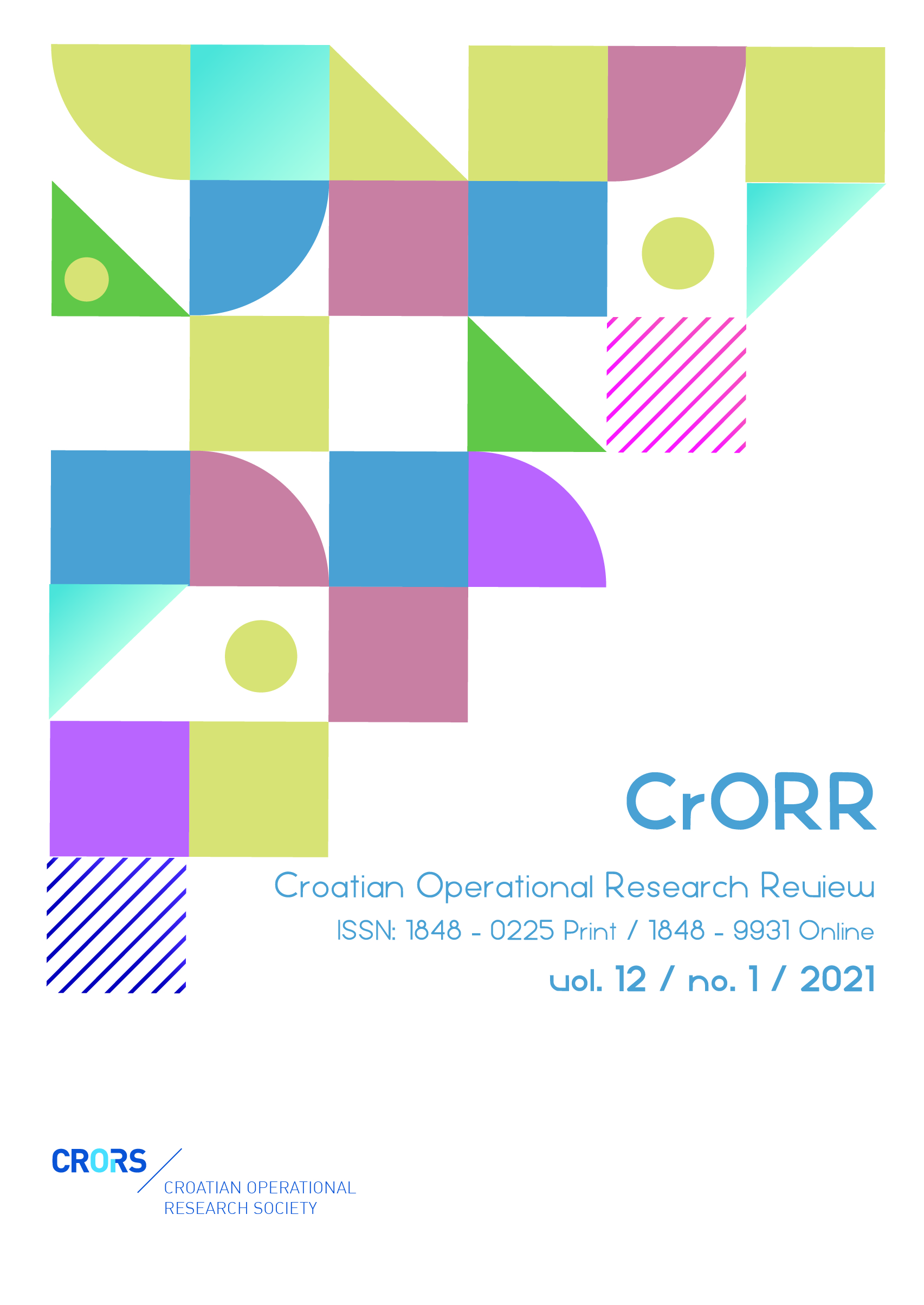Efficiency of European Airports: Parametric Versus Non-parametric Approach
Abstract
This paper presents a performance evaluation of European airports, based on the application of both parametric and non-parametric approaches. We have evaluated the 115 busiest airports in Europe according to the number of passengers checked-in in 2018. The four inputs we used were the number of Terminals, Runways, Boarding gates, and Aircraft stands. Three variables were used to describe the outputs, namely, Passengers, Movements, and Cargo. The parametric method we chose to apply was the Stochastic Frontier Analysis (SFA) with the Cobb-Douglas production function, the Half-Normal distribution of inefficiency component, and the Normal distribution of an error term. As a basic SFA model only allows for a single output, we employed different methods to get a single efficiency score for each and every airport. Next, we evaluated the airport performance non-parametrically using several Data Envelope Analysis (DEA) models including the super-efficiency model. We compared the results obtained by individual approaches and discussed their pros and cons. Finally, we applied the program evaluation procedure to explore the effect of the different forms of airports ownership on their performance.
Downloads
Published
Issue
Section
License
- Authors retain copyright and grant the journal right of first publication with the work simultaneously licensed under a Creative Commons Attribution License that allows others to share the work with an acknowledgement of the work's authorship and initial publication in this journal
- Authors are able to enter into separate, additional contractual arrangements for the non-exclusive distribution of the journal's published version of the work (e.g., post it to an institutional repository or publish it in a book), with an acknowledgement of its initial publication in this journal.
- Authors are permitted and encouraged to post their work online (e.g., in institutional repositories or on their website) prior to and during the submission process, as it can lead to productive exchanges, as well as earlier and greater citation of published work (See The Effect of Open Access).


